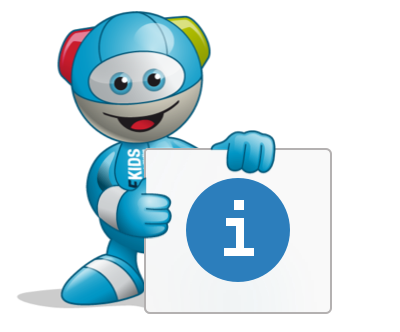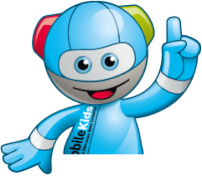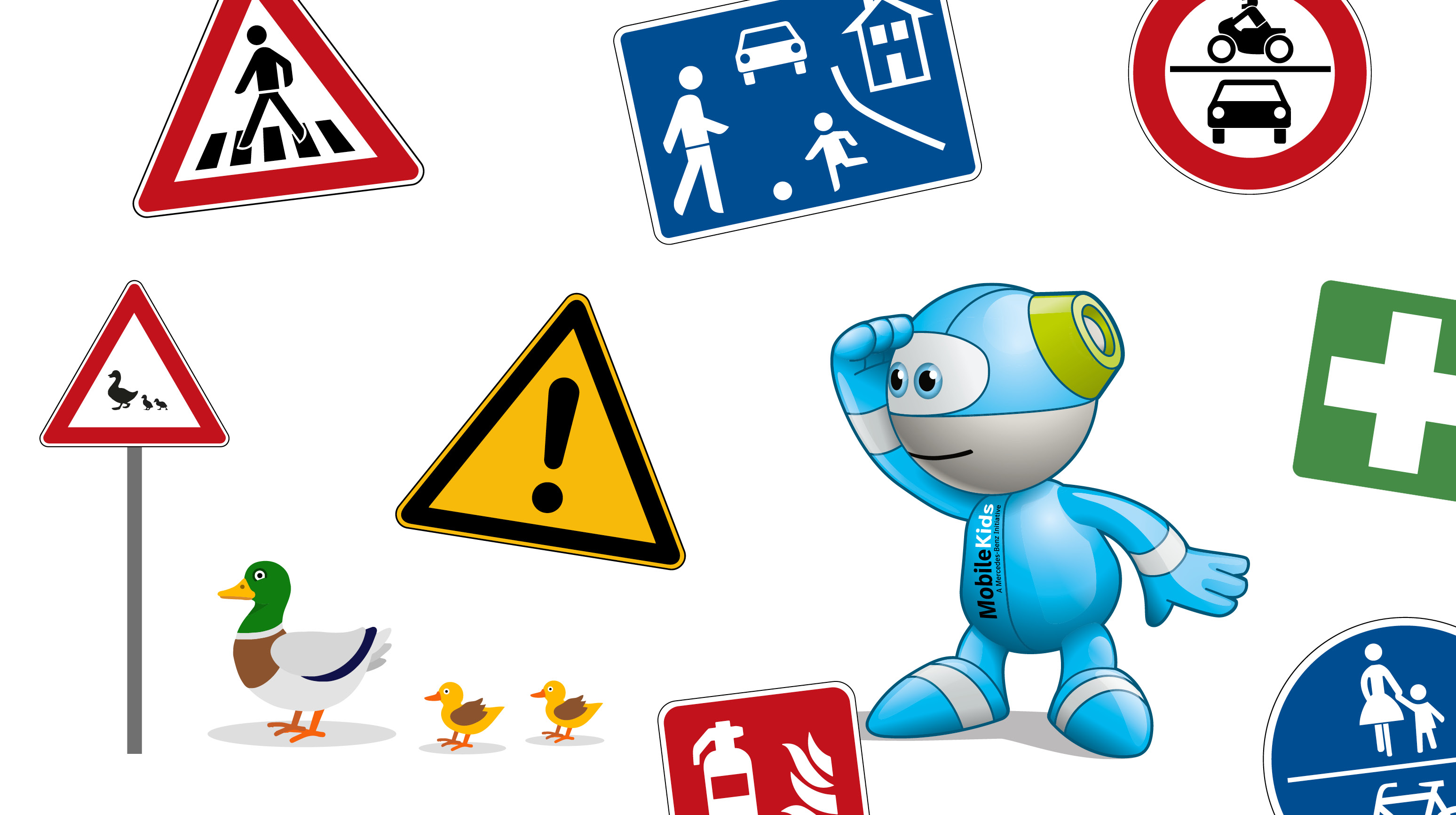Geometrical shapes and objects are part of a child's experience world. Children love to play with them. For example, they build towers and houses with colourful wooden building blocks in rectangular, round, triangular and other three-dimensional shapes. And they eat from a round plate, the paper they paint on is rectangular, their play mat is square. By kindergarten age at the latest they can name and distinguish shapes such as triangles, circles and squares. This promotes cognitive skills and later also the learning of writing and geometry in primary school. Recognition of geometrical shapes is one of the basic preparatory skills for mathematics.
Learning these skills is all the more important because traffic signs also use this simple principle of categorisation in a clever way. All over the world in fact. Although the signs are not the same everywhere, you can rely on two things: The shape and the colour always show what kind of traffic sign it is. This is because these two criteria can be used to distinguish between compulsory instructions or prohibition signs as well as warning signs, rescue or fire protection signs and notification or additional signs. The basic geometric shapes circle, triangle, square and rectangle, as well as the colours red, yellow, blue and green, form the basis for a uniform international traffic sign language.
The triangle warns of danger
In its current form, this has applied since the Vienna Convention in 1968. At this meeting, 62 countries agreed on the cross-border regulation of traffic signs. 88 countries have meanwhile ratified it. Countries not party to the Convention include Argentina, Australia, the People's Republic of China, India, Canada and the USA. In these countries the traffic signs look very different for the most part, but there are also similarities: Stop signs, give way signs, one-way street and signs for e.g. a car park are examples where the same shapes and colours are used all over the world.

With simple mnemonics, children can remember the meaning of shapes and colours in traffic signs.
- Round and red always means don't
- Round and blue must always be followed
- Triangular with tip pointing upwards: danger sign.
- Triangular with point downwards: give way
- Octagonal: Stop!
At the time, for example, the triangle was established in Vienna as the shape for all signs warning of danger - from road works to duck crossings. The reason is simple: A triangular shape is easily recognisable from a distance by motorists - even from behind, and even in winter if the sign is a little snow-covered. Anyone who sees a triangular sign automatically knows that it's a warning to be especially careful. And they do so long before seeing the symbol in the triangle that shows the actual danger. This is because the triangular shape is recognised as an early warning system that indicates a potential danger or risk . Most of these signs have a symbol or graphic in the centre representing the specific risk, and often a short text description or pictogram. Pictograms were also standardised in Vienna, to facilitate the understanding of street signs worldwide. In addition to traffic signs, traffic signals and road markings were also standardised. While the triangular shape is also valid for danger signs in China, they are not triangular in the USA but usually take the form of a yellow square standing on one point.
Children first have to learn the meanings of the shapes and colours. According to the psychologist Jean Piaget, primary school children are predominantly in the specifically operational phase of development. Owing to this cognitive development stage, they have difficulties in associating the symbol of a "traffic sign" with a specific rule. What this means, and how children learn to distinguish important from unimportant stimuli, is part of the MobileKids school material produced in cooperation with the Klett Mex GmbH.
There are many ways to prepare children in a playful way to recognise the importance of shapes and colours in general, and in road traffic in particular. Sorting objects by colour, size or shape, laying out patterns, creating pictures - children can familiarise themselves with geometric shapes in a variety of ways. With geometric objects, surface templates, the classic game Tangram and other educational counter and plug-in games, children learn to distinguish, compare and name the different geometric shapes. Cognitive skills, language and fine motor skills as well as spatial imagination are trained. Which traffic signs should children learn to start with? Younger children should primarily know the traffic signs that they need in their everyday lives and that enhance their safety. These include signs indicating a zebra crossing, a low-traffic/pedestrian area, a footpath or a cycle lane. In addition, there is another sign that exists all over the world and only once in that form: Every child knows the octagonal red Stop sign.


